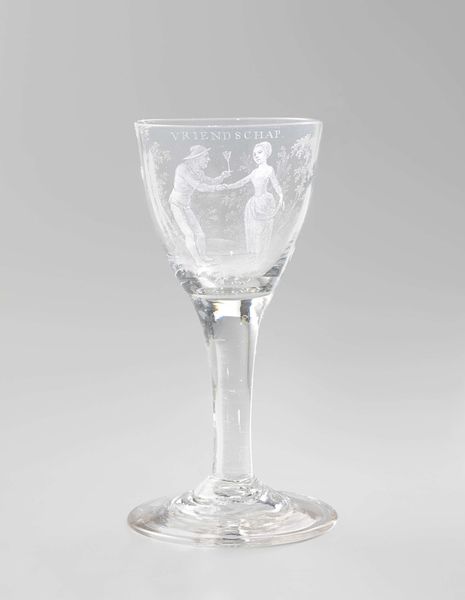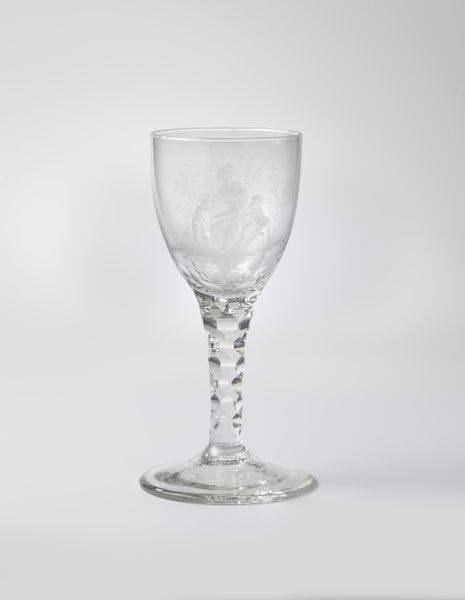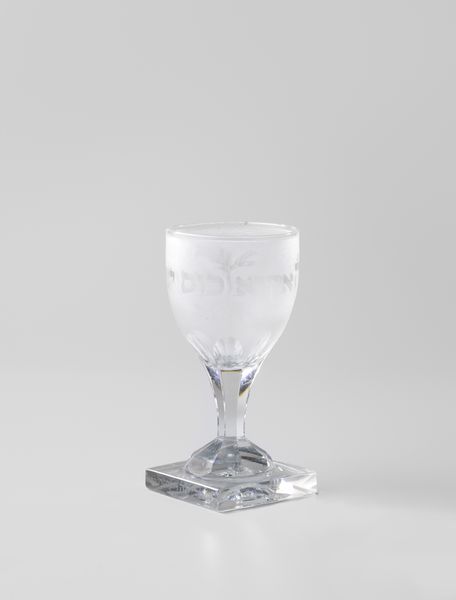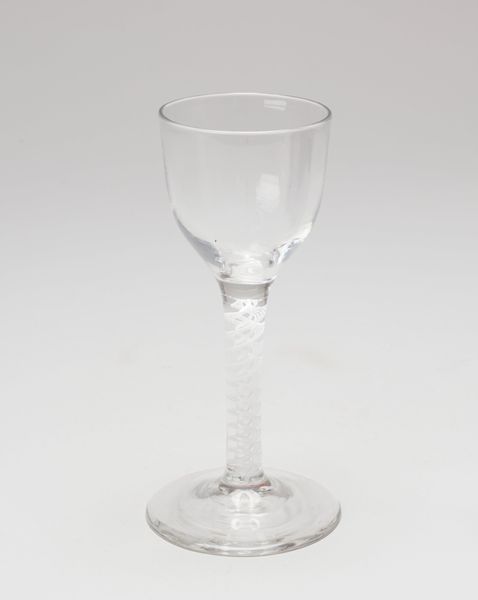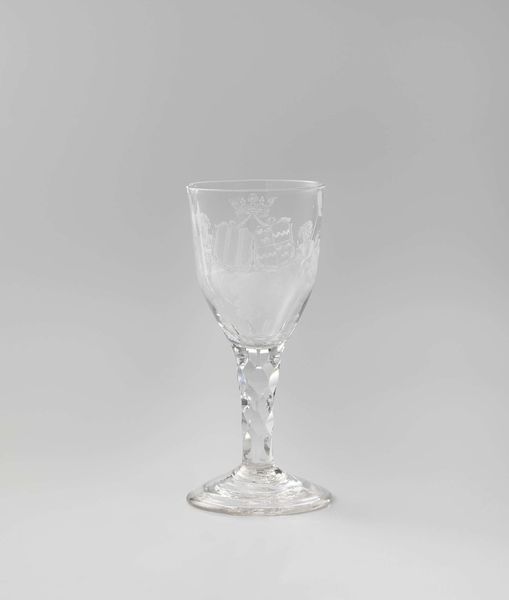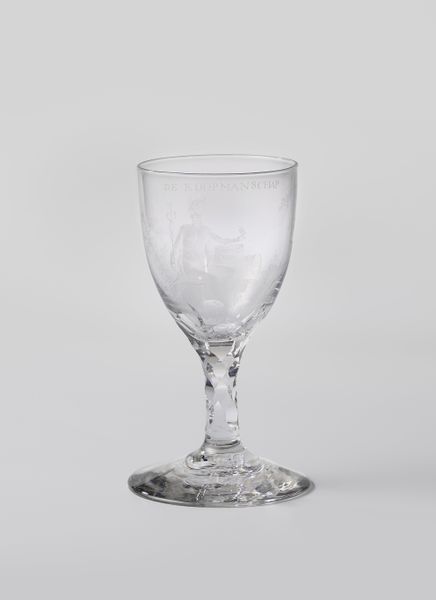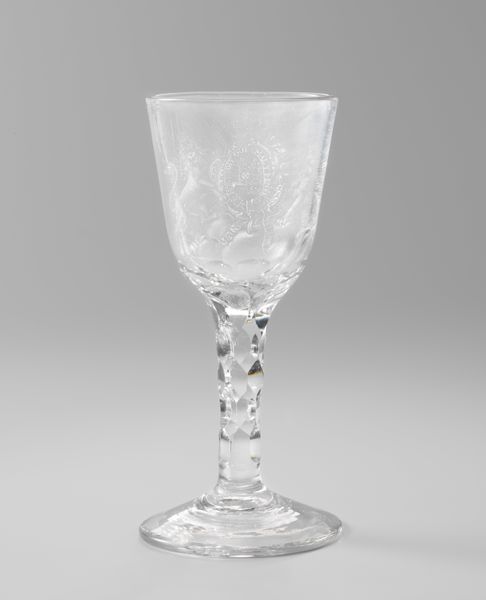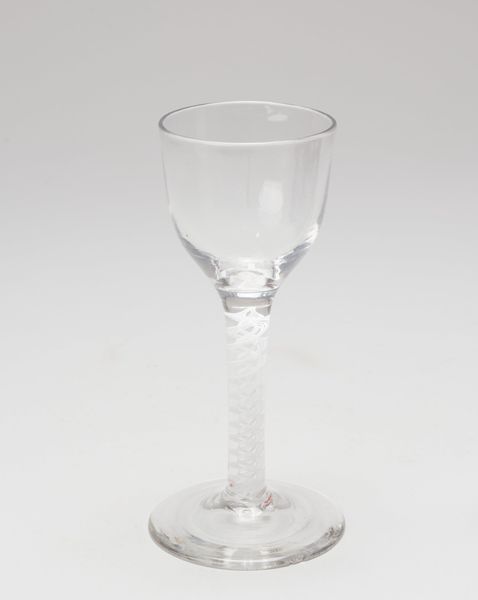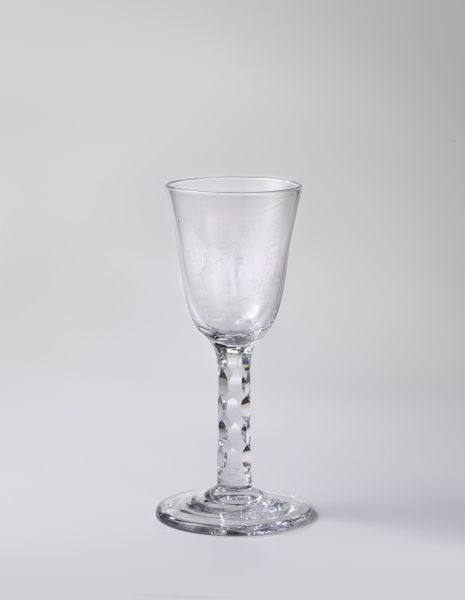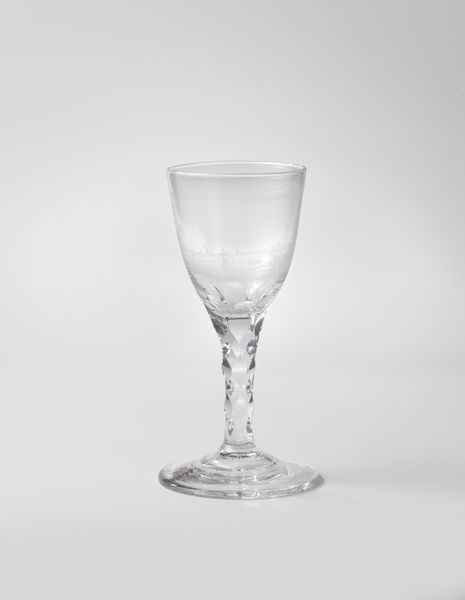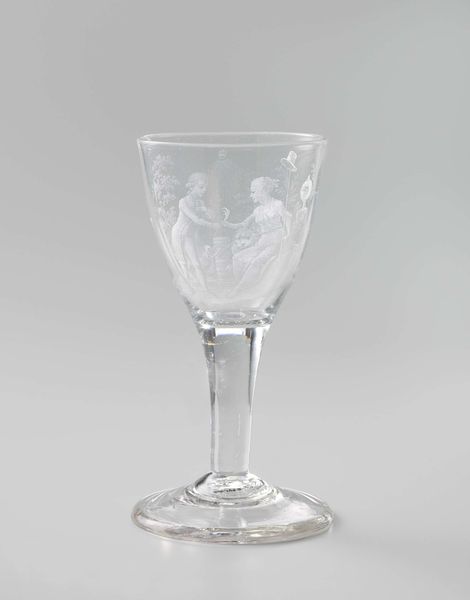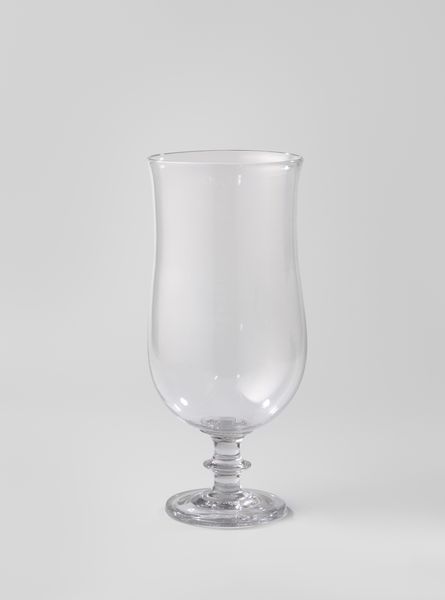
Kelkglas met een voorstelling die mogelijk betrekking heeft op de welvaart die de alliantie met de Franse Republiek in 1795 bracht c. 1795
0:00
0:00
glass, engraving
#
neoclacissism
#
allegory
#
glass
#
genre-painting
#
engraving
#
miniature
Dimensions: height 15.2 cm, diameter 8.2 cm, diameter 8.2 cm
Copyright: Rijks Museum: Open Domain
Curator: This delicate glass object is believed to date around 1795, titled "Kelkglas met een voorstelling die mogelijk betrekking heeft op de welvaart die de alliantie met de Franse Republiek in 1795 bracht", crafted anonymously using engraving techniques on glass. Editor: It feels like a fragile celebration. The etching is so subtle; it gives the glass an almost ethereal quality. I see children depicted with a cornucopia? It certainly speaks of bounty. Curator: Absolutely. Considering the era, the material production is fascinating. The relative luxury of fine glass during a period of political and social upheaval in Europe provides a curious counterpoint. How was this piece commissioned, who crafted it, and who could afford it? These questions offer insight into social dynamics of the time. Editor: For me, the engraved imagery speaks of the aspirations of the period, regardless of its actual accessibility. I see it referencing the "French Republic" specifically through the allegory. Notice the cornucopia overflows; perhaps a symbolic invocation of peace and trade fostered through alliance. Even the presence of children lends it a hopeful outlook towards the future. Curator: Yes, these sorts of alliances often came at the price of extracting material resources. This glass, as an object of display and utility, quietly embodies those economic exchanges and possibly hidden labor involved in the trade of glass, engravings, and other related crafts. Editor: While understanding the context of production helps, there's also the undeniable resonance these symbols carried at the time. The allegorical elements--children representing innocence, cornucopia representing prosperity, the implied presence of the "French Republic" – visually communicated hopes for a stable and lucrative future under new alliances. Curator: I find that investigating how a simple vessel reveals complex systems of manufacturing and trade tells a more potent story than a simple reflection of hope through symbols. The alliance was meant to shift the flow of resources, with objects such as these reflecting its impact at different levels. Editor: I see the appeal, but for the average observer, the interplay between form and symbols evoke ideas, often tied to pre-existing narratives within cultural memory. This helps viewers reconcile art with its intended cultural significance. Curator: Looking closely, it is striking how a material object like this speaks of so many connections: resource extraction, artisanal skills, global trade – a silent witness of history's unfolding through human interactions and exchanges. Editor: And on the surface, there is that deceptively delicate glass, and those poignant symbols still whispering stories of hope and aspiration, binding present to past in profound ways.
Comments
No comments
Be the first to comment and join the conversation on the ultimate creative platform.
